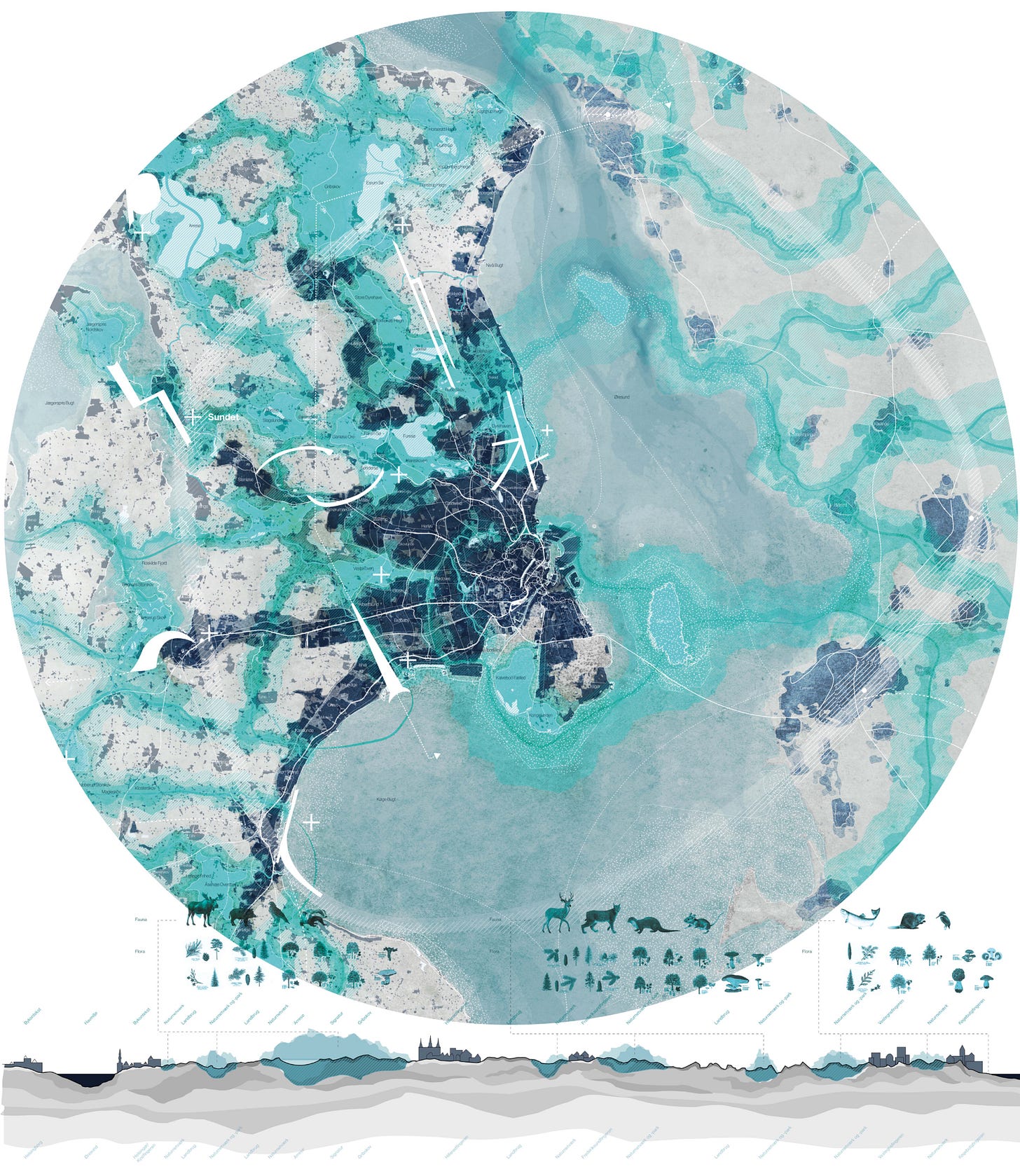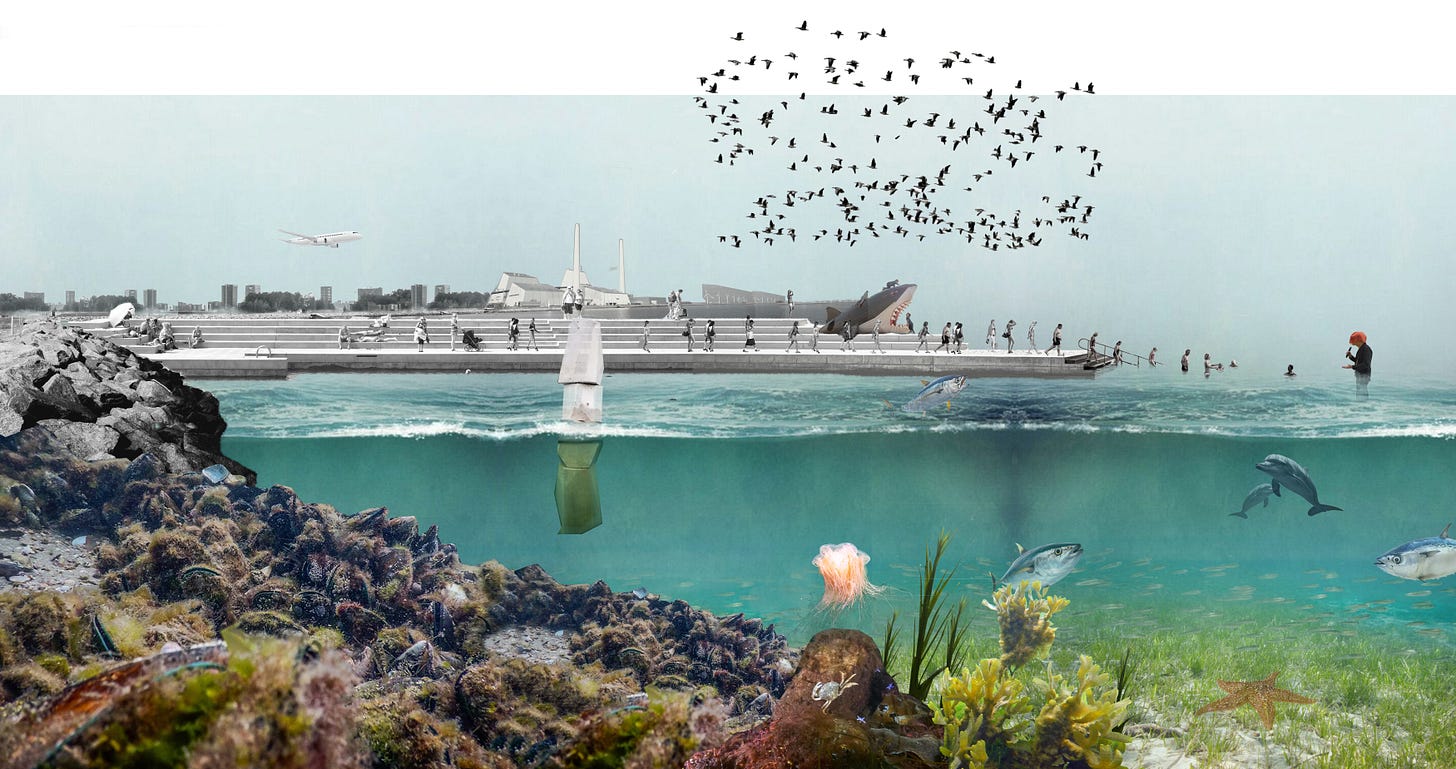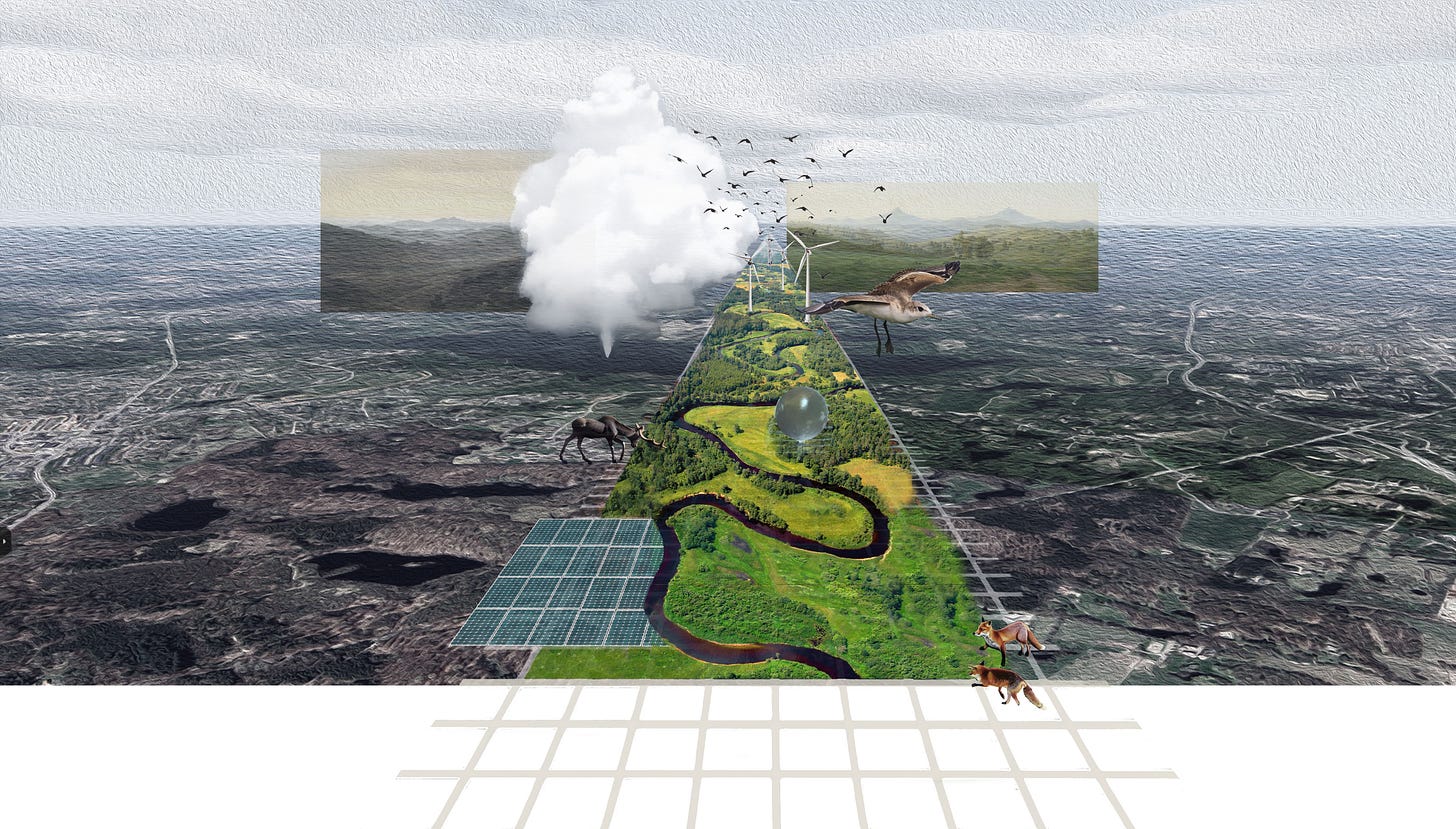For nearly 1,000 years, Copenhagen has developed organically along the expansive blue waters of The Sound. From Viking settlements to a thriving modern commercial and industrial city, its growth has been shaped by fishing, trade, and transportation. Over the past century, this development has accelerated, driven by modernity, the rise of the welfare state, and the regional Finger Plan, gradually transforming Copenhagen into a knowledge-based society. These changes have left a lasting imprint on the landscape, marked by intense urbanization, agricultural expansion, and economic progress. In the past decade the narrative surrounding urbanization has shifted dramatically. No longer fuelled by the optimism of growth, but instead deeply concerned with the challenges posed by planetary crises. Cities, including Copenhagen, are at the forefront of addressing climate change, tasked with creating a sustainable and dignified future for generations to come. Within contemporary Copenhagen, we continue to thrive amidst the dynamics of the Nordic welfare model—a system underpinned by innovation, a robust knowledge-driven economy, and the city’s strategic position as a gateway to Scandinavia and the Baltics. Yet, this rapid urban growth is fragmenting landscapes and undermining biodiversity. Moving forward, the Nordic model must lead towards a more planetary balance, elevating blue and green landscapes as essential components of quality of life and climate resilience within a cohesive blue-green network. This vision calls for a bi-regional strategy, uniting 4.5 million people into one of Northern Europe’s largest metropolitan areas. A framework that positions the region as a “Blue Metropolis,” where ecological and urban priorities converge to drive a pioneering climate economy that balances sustainability and growth.
A Nordic Metropole. A reimagined Finger Plan 2.0 for the Capital Region must adopt to a bi-regional approach around the massive blue space of The Sound, fostering greater connectivity among the cities surrounding it. This vision embraces an inclusive and economically sustainable range of housing options, benefiting both sides of The Sound and cultivating a collective identity, uniting communities across cities and national borders. The region aspires to become a hub of international collaboration, linking Copenhagen-Malmø as a hub between Scandinavia and the rest of Europe.
A collective mobility concept connects the different urban scales and densities of the region, and applies a new scale of life in micro-communities. The Blue Metropolis will limit urban growth by utilizing the flexibility of what is already built (over- and under ground) and articulate a new understanding of natural resources. A changing focus from the human hand to a future blue-green network, drawn from the natural waterways of rivers, lakes and ponds. Shifting the focus from human-centric design to ecological balance, this bi-regional initiative addresses the challenges of identity, climate, biodiversity, mobility, energy, diversity, and economy, laying the groundwork for a more regenerative future.
Five Scenarios - Opportunities to Transform
The current climate crisis is not merely a challenge but an opportunity to foster collaboration and build a sustainable urban economy and society. By connecting local communities to the broader region and continent, five future scenarios for The Blue Metropolis offer potential solutions to pressing societal challenges. These scenarios draw inspiration from the “Copenhagen Lessons,” developed during the UIA World Congress of Architecture, aiming for a more regenerative future.
1. Fingerplan 2.0 A renewed Finger Plan is structured around three distinct scales that attempts to redefine qualities and lifestyles by building new narratives through historical traces of planning, urban culture and a renewed valuation of our open landscape: ‘The Palm’, Copenhagen being the heart of the region and the central hub of activity. ‘The Finger Cities’, the vibrant urban nodes along the urban fingers. ‘The (finger)tips’, the historical ‘Market towns’, marking strong urban nodes in the region. Finally, a fourth scale appears in the new plan, as ‘Micro communities’, defined as smaller settlements in between the fingers fostering slower, off-grid lifestyles, outside the collective networks. 2. The Metropolitan Loop A bi-regional mobility concept connects existing cities, reducing the need for urban sprawl. The plan integrates diverse urban scales and lifestyles, offering seamless travel within a shared transportation network, ensuring accessibility and convenience for all. 3. Climate Lab Innovative strategies and technologies will position the region as a global Climate Laboratory. A new regional fund will support startups and initiatives addressing climate challenges, driving collaboration across the Øresund region.
4. SigNature Parks As demand for access to high-quality nature grows, The Blue Metropolis envisions a network of Signature Parks. These spaces will enhance climate resilience while providing recreational and health benefits. The network will seamlessly integrate green and blue landscapes into collective networks, ensuring every resident has access to nature. 5. The Metropolitan Council A sustainable and inclusive future requires innovative governance. A regional council will oversee spatial planning across Øresund, representing diverse interests—including ecological considerations. This council will champion bold initiatives within the framework of planetary boundaries, Leaving No One Behind.
The scenarios for a ‘Blue Metropolis’ elaborate on possible futures for the Capital Region of Copenhagen. A ‘cultural hand turn' capturing the zeitgeist is needed for our Fingerplan to meet the future goals of climate resilience, a high quality urban environment, and a socially balanced society.
’There is no end to Copenhagen’, is a series of ideas and strategies for a more regenerative development of the city and region of Copenhagen.





